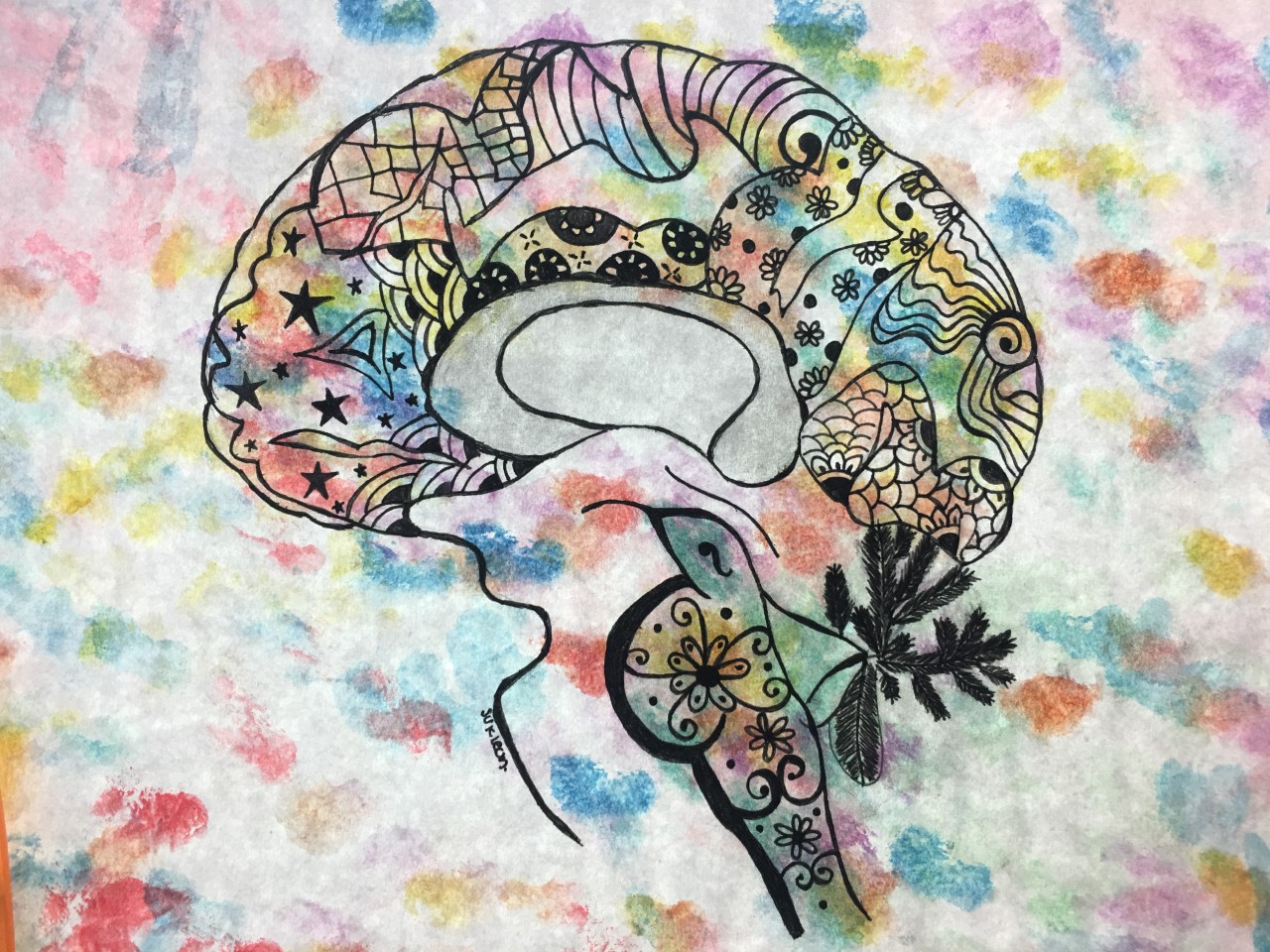Session Information
Date: Tuesday, September 24, 2019
Session Title: Education / History in Movement Disorders
Session Time: 1:45pm-3:15pm
Location: Agora 2 West, Level 2
Objective: The main objective of this work is to expose th paintings of an artist with myelomeningocele and her fascination with hummingbirds in patients with PSP.
Background: Progressive supranuclear palsy (PSP) is characterized by slowness, rigidity, bradykinesia, repeated falls, downgaze limitation and dementia. Midbrain atrophy on magnetic resonance imaging is highly suggestive of PSP and is described as “hummingbird sign”. This sign is very helpful in differentiating PSP patients from those with Parkinson’s disease. It has been 25 years since the first description in 1994 by Dr. Iwata.
Method: Report of case of a patient with a motor dissability and her paintings of hummingbirds in the brain of patients with PSP.
Results: S.P.L. is a 24 years old female, who was born with myelomeningocele leve L2 After that. She went through surgery at 6 and 12 months at Shriners Hospital in Mexico city. Studied Education at a private university in Tuxtla Gutierrez, Chiapas, Mexico, because of the lack of wheel chair accesibility in the public university. Since she was at elementary school began to sketch and draw for her own pleasure, developing a personal syle of painting. She loves painting landscapes and animals with a pinch of mandalas as a way to deal with difficult situations.
Conclusion: The hummingbird sign, also known as the penguin sign, refers to the appearance of the brainstem in patients with progressive supranuclear palsy (PSP); it is also a native and tiny american bird, which inspires artists around the world.
To cite this abstract in AMA style:
A. Kleinert. Neuroart: A Hummingbird in the Cage of the Brain [abstract]. Mov Disord. 2019; 34 (suppl 2). https://www.mdsabstracts.org/abstract/neuroart-a-hummingbird-in-the-cage-of-the-brain/. Accessed April 21, 2025.« Back to 2019 International Congress
MDS Abstracts - https://www.mdsabstracts.org/abstract/neuroart-a-hummingbird-in-the-cage-of-the-brain/

